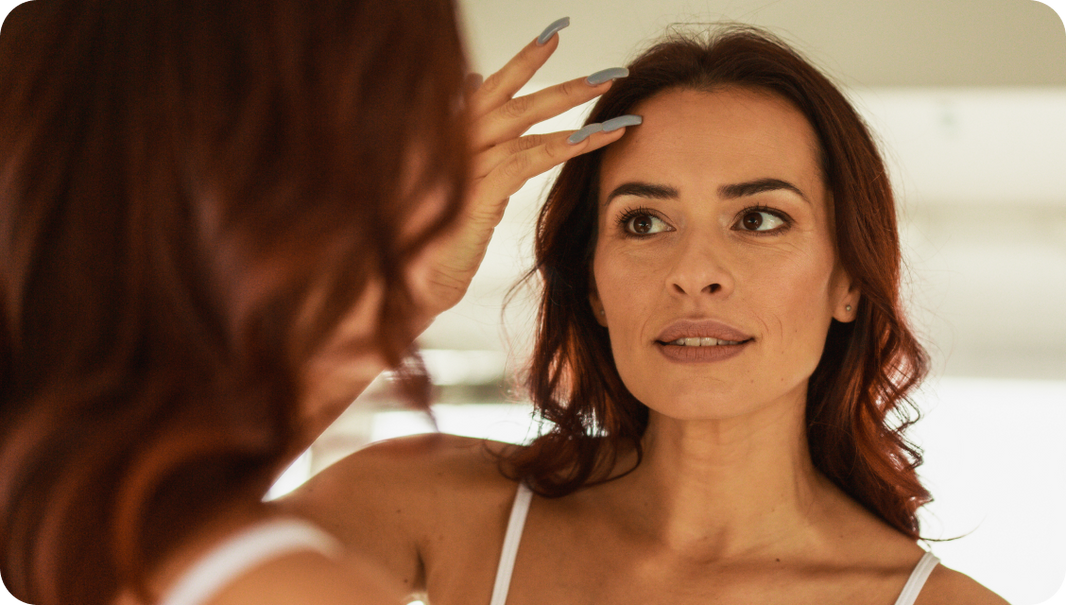Dealing with parched, uncomfortable tightness or flaking after removing hair can make the chore of hair removal even more unpleasant. From legs to faces, dryness and irritation after shaving is a common problem for both men and women across skin types. It can manifest as anything from minor itching to red bumps or significant peeling if severe.
While shaving itself removes the dead protein strands of hair, the process almost inevitably compromises the skin underneath to some degree. Stripping of natural moisturizing oils, inflammation from micro-injuries, and a disrupted protective barrier leave skin compromised. Transepidermal water loss occurs at a higher rate once this vital cushioning and hydration is impaired after the blades have left their mark.
Depending on individual skin sensitivities and responsiveness, this after-shave dryness can linger for hours to days. Inflammation can even trigger longer lasting complexion issues like acne or dark spots in reactive skin types.
The good news is that with some adjustments to tools, techniques and post-shave skincare the discomfort and aesthetic issues resulting from post-shave dryness can be minimized or avoided altogether. Understanding root causes, following best practices for your skin needs, and allowing skin to regenerate makes managing irritation easier. Get solutions for reclaiming hydrated, smooth skin after hair removal with guidance from JOVS skincare experts.
Causes and Misconceptions Around Post-Shave Dryness
There are a few key reasons shaving leaves skin parched:

Removing Oils - Using razors or hair removal creams strips away protective sebum and lipids. These oils help lock in moisture and cushion skin. Their absence allows transepidermal water loss.
Damaging Skin Barrier - Blades, harsh soaps or alcohol-based products can damage the barrier responsible for hydration retention. Microscopic nicks or irritation also provoke inflammation, increasing water loss.
Myths persist around causes like removing hair, shaving, and lifting skin away. But hair is dead material and removal does not dehydrate skin. Pressure from poor technique can inflame, though. The main factors relate to oil and moisture reduction coupled with inflammation.
Effective Pre-Shaving Skincare Routines
Thorough cleansing and exfoliation ensure skin is free from dirt, oils and dead cells that can block follicles and cause ingrown hairs. But shaving already strips oils, so limit this pre-shave.
Hydrating Cleansers - Rather than foaming washes, opt for hydrating jelly or milky cleansers before shaving. These still cleanse without over-drying.
Warm Water - Rinsing in warm rather than hot water keeps pores open without being a shock. Consider finishing with a cool rinse to close pores and calm skin pre-shave.
Apply Protective Oils - Natural oils high in fatty acids and vitamin E like jojoba, olive, or almond, lubricating barrier limiting friction and irritation during shaving for less post-shave dryness.
Exfoliate Strategically - Regular exfoliation maintains healthy skin turnover, enabling hair to emerge easily. But limit physical exfoliation immediately pre-shave to avoid sensitivity. Use gentle chemical exfoliant pads instead just before shaving.
Proper Shaving Techniques and Tools
Quality razor choices coupled with good methods help prevent unnecessary irritation driving post-shave dryness:
Sharp, Multi Blade Razors - Dull blades require more passes and pressure causing extra friction. Newer cartridge styles also pull skin flatter, versus a traditional double edge. Opt for sharp blades with a pivoting head.

Shaving Gels/Oils - Water alone won't lubricate for a close shave without irritation. Use specially formulated shave gels/oils.
Light Strokes - No pressure is needed, let blades glide across with their own weight, rinsing between stroke sets. Pull skin taught where possible. Repeat growing hair direction, then across.
Moisturize Right After - Pat dry then apply aftershave treatment like aloe gel or a moisturizer lotion immediately post-shave to nourish skin and restore lipids before drying occurs.
How to Get Rid of Dry Skin After Shaving
Post-shave routines focus on calming, restoration and hydration:
Cleanse Gently - Use lukewarm water and a soap-free cleanser to remove residue without stripping moisture.
Soothe and Calm - Applying a nick stick can provide antiseptic, anti-inflammatory relief to weeping nicks, helping prevent infection and dryness.
Chemical Exfoliation - Once skin adjusts, using alpha hydroxy acid pads gently removes dead skin so moisturizers absorb better without aggravating.
Hydrating and Nourishing Serums - Thin, fast-absorbing hyaluronic serums provide an extra veil of hydration while repairing ceramides seal it in.
Rich, Soothing Moisturizers - Creams with skin conditioners like shea butter help restore suppleness, oils and reinforce skin barrier.
Soothing Masks - Occasional application of hydrating masks after shaving nourishes skin while calming any residual redness.
Home Remedies and Over-the-Counter Solutions
For those looking to solve post-shave dryness using items around the home or pharmacy favorites, options include:

Aloe Vera Gel - The ultimate skin soother, aloe vera gel helps provide immediate cooling, anti-inflammatory relief while delivering hydration to compromised skin post-shave.
Honey - With antibacterial, hydrating properties and enzymes that speed healing, raw honey makes an ideal natural after-shave mask-leave for 10 minutes then rinse.
Coconut Oil - The fatty acids help reinforce skin barrier protection while vitamins and antioxidants nourish to promote healing with its quick absorbing, soothing properties. Gently massage in after shaving.
Hydrocortisone Cream - This over-the-counter anti-inflammatory can calm razor irritation, bumps and slow water loss from damaged skin after shaving to supplement moisture steps. Use temporarily.
Moisturizing Aftershave Balms - Designed specifically for post-shave skin, these alcohol-free soothing formulas contain humectants and oils to replenish hydration.
Lifestyle and Environmental Factors
Aside from proper skincare, be mindful of lifestyle and environmental factors that influence skin's baseline hydration and sensitivity levels.
Sun and Heat Exposure - UV radiation and external heat sources degrade natural moisturizing factors in skin as well as drying. Avoid extended exposure and generously apply sunscreen if shaving body parts that will be exposed such as legs or arms.
Hard Water - The mineral content in hard tap water can leave irritating residue on skin interfering with absorption of applied moisturizers. Using a shower filter and limiting temperature/time helps.
Cold, Dry Air - Heated indoor air coupled with cold, dry outdoor air in winter pulls moisture from exposed skin. Consider humidifiers to maintain balance. Keep skin covered when possible and ensure body moisturization.
Summary: Keeping Your Skin Hydrated and Healthy
With diligent pre- and post-shave skin preparation, proper techniques suited to your skin type, and protective lifestyle measures, the problem of dry, flaky skin after shaving is controllable. JOVS offers high-quality shaving and skincare products that aid in restoring and preserving hydration before and after hair removal. Our unique SR Tender Skin mode enhances the skincare experience during hair removal, providing a versatile solution. Schedule a consultation today to reclaim smooth comfortable skin.








